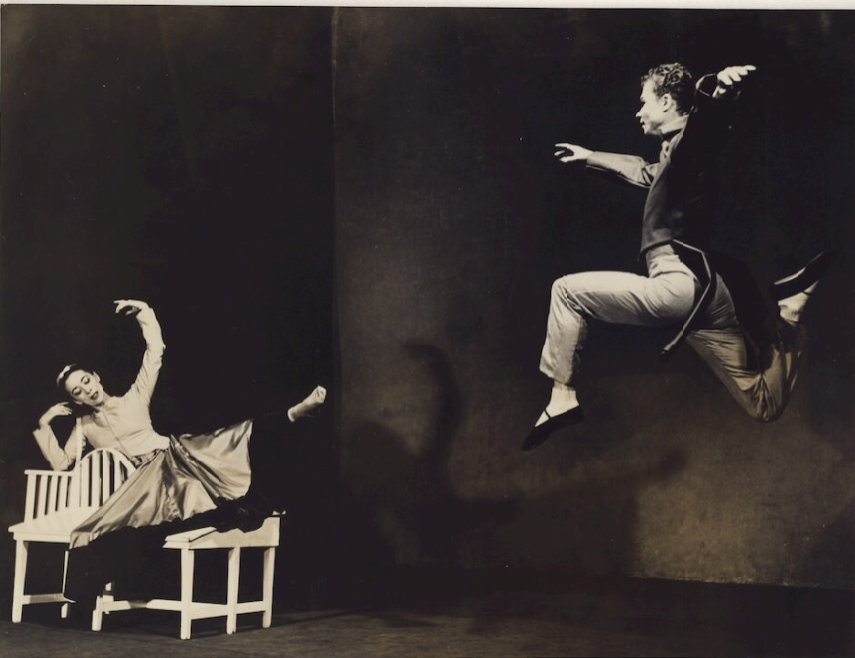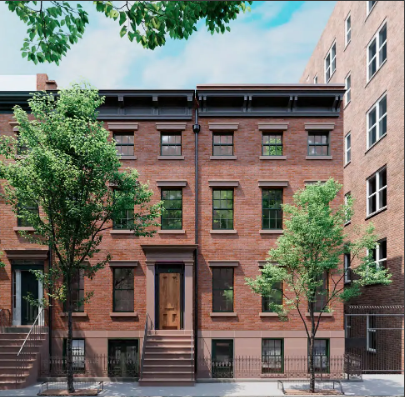Merce Cunningham: Dance-Maker, Innovator, Teacher, and Villager

Merce Cunningham, considered by many one of the most influential choreographers of the 20th century, was a multi-dimensional artist. He was a dance-maker, a fierce collaborator, an innovator, a film producer, and a teacher. During his 70 years of creative practice, Cunningham’s exploration forever changed the landscape of dance, music, and contemporary art. The avant-garde choreographer was a Villager who made a home at 107 Bank Street with his partner John Cage, and whose studio was for many years located at Westbeth Artists Housing. Cunningham’s life and work is celebrated in Village Preservation’s public outdoor exhibition, VILLAGE VOICES 2022.

Born in Centralia, Washington on April 16, 1919, Cunningham is now widely acknowledged as one of the three most influential American dance makers of the 20th century, alongside George Balanchine and Martha Graham—choreographers whose work he both amplified and rejected.

Cunningham began dancing at a very young age. At the Cornish School in Washington State, he first encountered the work of Martha Graham, who would later invite him to join her company in New York; Cunningham had a six-year tenure as a soloist with the Martha Graham Dance Company. It was also at Cornish that Cunningham first met John Cage, who would become the greatest influence on his practice, his closest collaborator, and his partner until Cage’s death in 1992.
Cunningham’s radical and perhaps most important contribution to the aesthetic of dance was the notion that movement could be presented on stage divorced from characterization, representation, or music. Cunningham and Cage often relied on “chance procedures” in creating dances and dance scores: rolling of the dice, and consultations of the I-Ching.

A force of change in modern dance, Merce Cunningham created a body of work and a choreographic process that pushed the intellectual, physical, and technological boundaries of dance. His work has challenged the very meaning and purpose of movement.
Cunningham radically departed from popular modern dance. He believed dance need not be motivated by a narrative or emotion: his works made movement itself the subject of dance. He would explain “I have the idea that dancing doesn’t need something else to support itself, that it is what it is by itself” His dancers held positions for extended periods, then dashed across the stage performing elaborate, unexpected sequences.
Cunningham challenged the time-honored relationship between dance and music. Usually agreeing only upon an overall duration, Cunningham and Cage composed their works separately and then allowed the music and dance to occupy the same time and space in performance. Cunningham’s movement and Cage’s music were parallel forces operating on separate planes, so each gesture stood on its own. This approach extended to the design as well. Robert Rauschenberg, Jasper Johns, Frank Stella, and many other artists were commissioned to design sets, costumes, and lighting with little or no interference.

Cunningham was also a pioneer in applying technology to performance. In the seventies, he began working with film and video, both by choreographing dances specifically for the camera and by devising unique ways to capture existing dances on video. He began choreographing on a computer in 1989 using software that portrayed outlines of human figures in a three-dimensional space. The computerized figures had movable joints which were made to spin, jump, leap, reach, and bend. His 1991 work BIPED expanded his use of technology by projecting digital artwork derived from dancers’ motion-captured figures onto the stage, creating yet another dimension of movement.

Westbeth played a major role in Cunningham’s creative life. Among the very first tenants in 1971, he rented the penthouse auditorium studios here. For the next 38 years Westbeth was home to the Merce Cunningham Company.
Merce on Westbeth:
But the space, there are two things about it I remember from the very beginning. First of all it was just the size. It was wonderful. And I finally woke up to the fact about the views. It took awhile, but I suddenly realized you could see out here and see a great deal of Manhattan, and up here see the river and every once in a while a big boat will pass. I kept thinking what it must have been like a hundred and fifty years ago with the river dotted with sailboats.
In 2007 Village Preservation was honored to conduct and publish an oral history with Merce Cunningham. You can listen to that oral history, as well as read the transcript, here.


The life and work of Merce Cunningham will be on display from September 18 – October 30 as part of our 2022 Annual outdoor interactive public art exhibition: VILLAGE VOICES. Our exhibition features an engaging installation of exhibits displayed throughout our neighborhoods featuring photographs, artifacts, and recorded narration that provides entertaining and illuminating insight into the momentous heritage of the Village.
